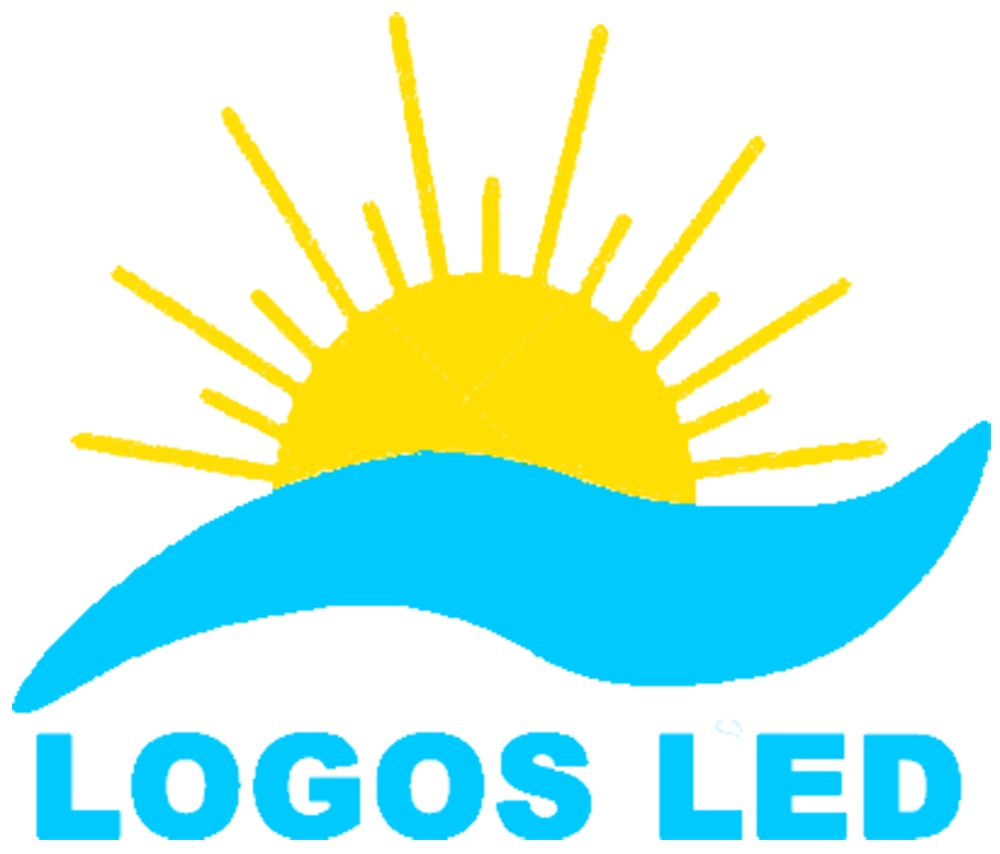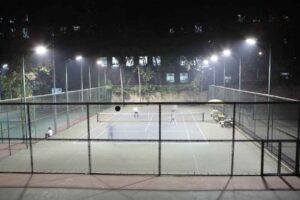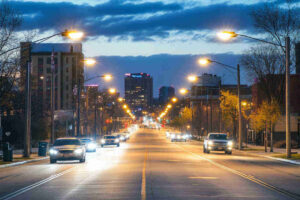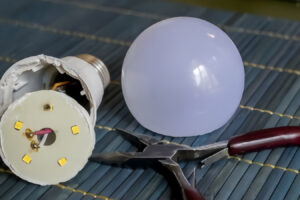Lighting is a game-changer in football, especially for night matches. If the lights are too low, players might struggle to track the ball, and visibility issues could make the game unsafe. On the other hand, poorly positioned floodlights can lead to high energy costs and excessive glare, affecting both players and spectators. So, what’s the ideal height for football field lights? Let’s break it down.
Football floodlights are generally mounted on poles ranging from 20 to 30 meters (66 to 100 feet) for standard fields. This height ensures balanced brightness and even coverage. For larger or professional stadiums, poles can go up to 30 to 40 meters (100 to 130 feet) to meet more demanding lighting standards, especially for televised matches. The right height is key to reducing glare, providing uniform illumination, and ensuring clear visibility for players and fans alike. Factors like field size, lighting technology, and brightness levels all influence the best pole height and placement.
Wondering what height is perfect for your football field? Let’s dive into the details to ensure your lighting system meets the highest standards.
Table of Contents
Sports Lighting Guidelines: Key Considerations
Good sports lighting isn’t just about brightness—it’s about ensuring safety, visibility, and an outstanding viewing experience. Whether it’s a local game or a high-stakes professional match, following the right lighting guidelines makes all the difference. Proper lighting enhances player performance, improves broadcast quality, and keeps spectators engaged.
Football Pitch Dimensions: Why They Matter
The size of the football pitch is one of the most important factors when designing a lighting system. FIFA sets specific standards for pitch dimensions, which generally fall within these ranges:
- Length: 90 meters (100 yards) to 120 meters (130 yards)
- Width: 45 meters (50 yards) to 90 meters (100 yards)
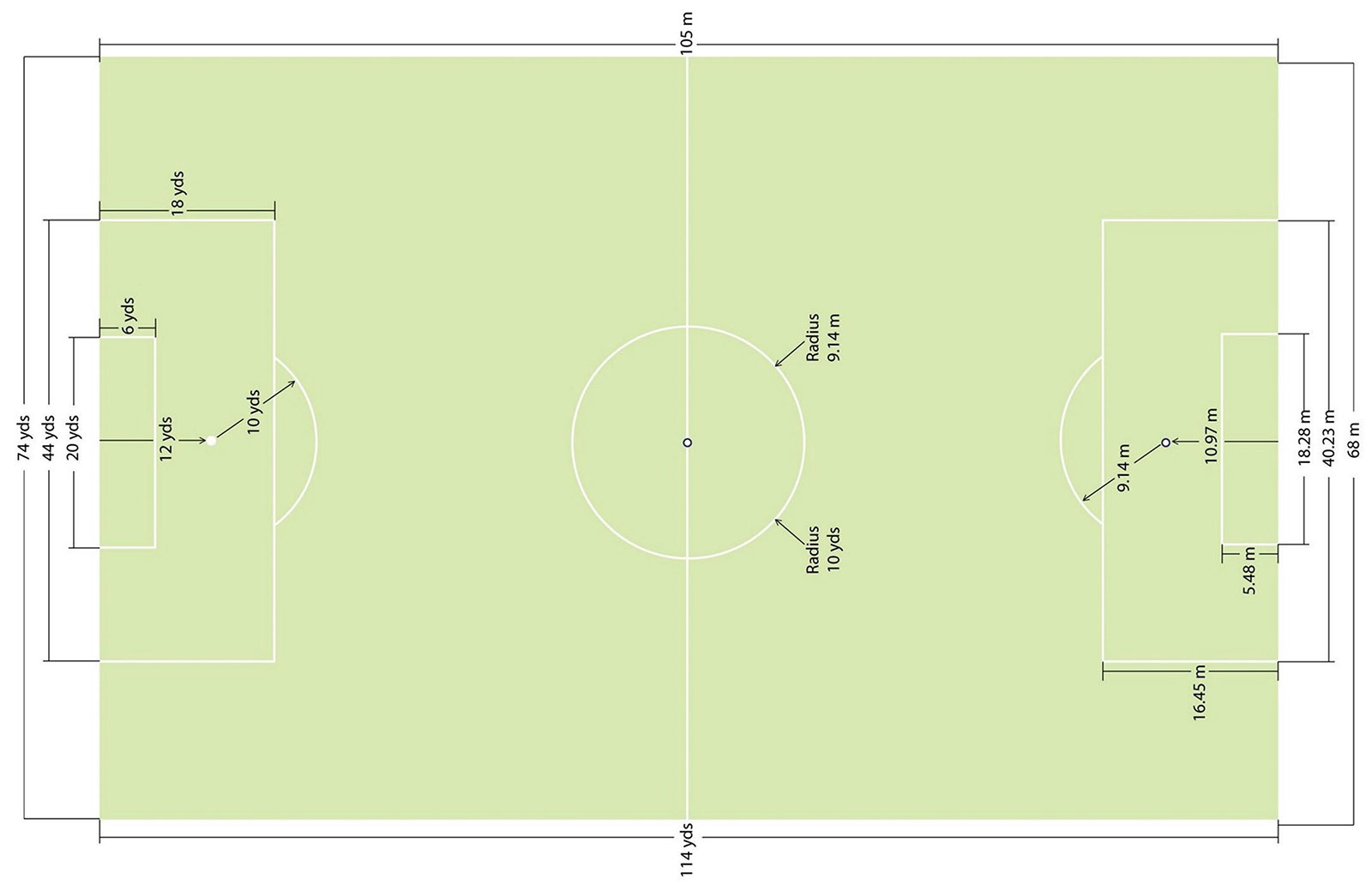
UEFA Pitch Dimensions
These dimensions directly impact the lighting layout, pole positioning, and required brightness levels. The bigger the field, the higher and more strategically placed the floodlights need to be for consistent illumination across the playing area.
Optimizing Light Arrangement for Football Fields
The arrangement of floodlights plays a critical role in delivering uniform illumination across the field. A well-planned setup ensures that every corner of the pitch is well-lit while avoiding glare and unwanted shadows. For football fields, floodlights are typically mounted on poles placed strategically around the perimeter.
- Angle and Positioning: The lights should be carefully angled to illuminate crucial areas such as the penalty boxes, center circle, and sidelines. The positioning must also ensure that players aren’t blinded by direct light.
- Spacing: Proper spacing between floodlights prevents uneven lighting. No section of the field should be underlit, and overlapping light beams should provide smooth transitions between illuminated areas.
Pole Layout and Height: Finding the Right Balance
The height and placement of poles significantly impact the effectiveness of a football field’s lighting system. The correct setup ensures balanced brightness, reduces glare, and provides a professional playing environment.
- Pole Height:
- Standard football fields generally require poles between 20 to 30 meters (66 to 100 feet) for proper light distribution.
- Professional stadiums may use taller poles, reaching up to 40 meters (130 feet), to accommodate larger playing areas and meet high-definition broadcast requirements.
- Pole Layout:
- Poles are typically placed along the perimeter of the field to ensure uniform light coverage.
- A combination of corner and side poles helps eliminate dark spots while minimizing shadows.
- Proper placement also prevents direct glare, keeping the playing experience comfortable for athletes and spectators alike.

Grade 1 – FIFA World Cup Training Pitch Design Examples
Uniformity: Ensuring Consistent Lighting
Uniformity is one of the most essential factors when it comes to sports lighting. It guarantees that every inch of the playing surface is evenly illuminated, which allows players to move without being affected by dark spots or overly bright areas.
- Uniformity Ratio: This ratio compares the average illuminance to the minimum illuminance across the field.
- For recreational play, a uniformity ratio of 0.7 is recommended.
- For professional games, it should be 0.8.
- For televised events, the ratio should be 0.85 or higher.
- Lighting Distribution: Careful placement and angling of the lights are necessary to achieve consistent coverage. The goal is to avoid any overly bright spots or under-lit sections.
Glare: Managing Excessive Brightness
Glare is another critical factor to consider in sports lighting. It occurs when light intensity is so high that it causes discomfort or impairs visibility, especially when it’s directed toward players or the audience.
- Controlling Glare: To reduce glare, lights should be positioned at angles that keep direct beams away from players’ or spectators’ eyes.
- Using anti-glare lenses or diffusers can further help control light dispersion and minimize unwanted brightness.
- Reducing Glare: LED floodlights with adjustable beams can direct light where it’s needed, enhancing player visibility and reducing unnecessary glare.
Dimming: Flexibility for Different Needs
Dimming allows for adjusting the brightness based on the requirements of the game or event. This flexibility brings several advantages:
- Energy Efficiency: During practice sessions or non-peak games, dimming helps conserve energy while still providing adequate lighting.
- Broadcasting: For televised events, dimming the lights can help optimize camera angles and create better visual effects. It also ensures smooth transitions, such as shifting from daylight to evening matches.
Flicker: Ensuring Smooth Lighting
Flicker is a common problem with older lighting technologies, such as halogen or metal halide lamps. It can lead to discomfort for players and spectators and negatively affect broadcast quality.
- LED Technology: To eliminate flicker, LED lights are highly recommended. They offer stable, continuous illumination without the fluctuations found in older lighting systems. This provides a smoother playing experience and clearer visuals for both live audiences and TV viewers.
- Flicker-Free: A top-notch lighting system should ensure flicker-free performance, especially for high-definition broadcasts and professional events.
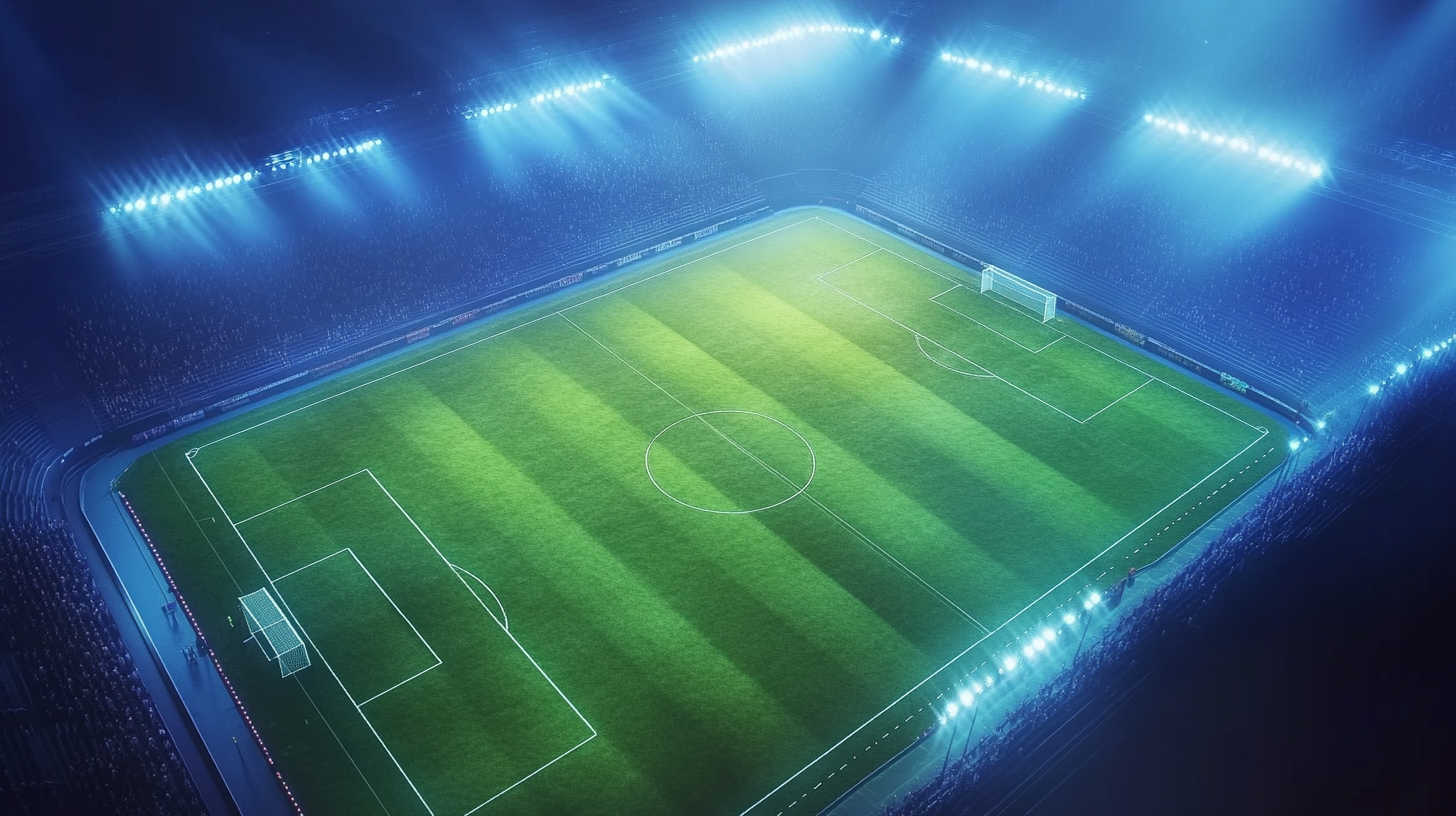
Correlated Color Temperature (CCT): Perfecting Light for Clarity
Correlated Color Temperature (CCT) refers to the color emitted by the light fixture. The right CCT is crucial for sports lighting as it enhances visibility and contrast, helping players and referees stay on top of the game.
- Ideal CCT: For football fields, a cool white light with a CCT range between 4000K and 5000K is recommended. This range simulates daylight, improving the visibility of the ball, players, and field markings.
- Daylight Effect: For high-profile events or televised games, a higher CCT of 5000K or above is often preferred. It creates the sharp contrast needed for high-definition broadcasts and closely mimics natural daylight, making the field appear bright and clear.
Color Rendering Index (CRI): Enhancing Visual Accuracy
The Color Rendering Index (CRI) measures how accurately a light source reflects the true colors of objects, compared to natural daylight.
- Ideal CRI: A CRI of 80 or higher is ideal for football fields. Higher CRI values help players better spot the ball and ensure referees can make accurate calls with clear visual distinction.
- LED Lighting: LED lights are especially beneficial for sports fields as they typically offer a high CRI, providing a more accurate representation of colors. This not only helps players but also elevates the viewing experience for spectators.
To ensure optimal conditions on the football field, proper lighting guidelines are essential. From field dimensions, light arrangement, and pole placement to controlling glare and ensuring uniform lighting, each factor contributes to a better playing environment. Factors like flicker-free performance, adjustable brightness through dimming, and the right CCT and CRI ensure the best visibility, player performance, and broadcast quality. With the right lighting setup, both on-field and broadcast experiences can be enhanced for everyone involved.
How High Are Football Floodlights?
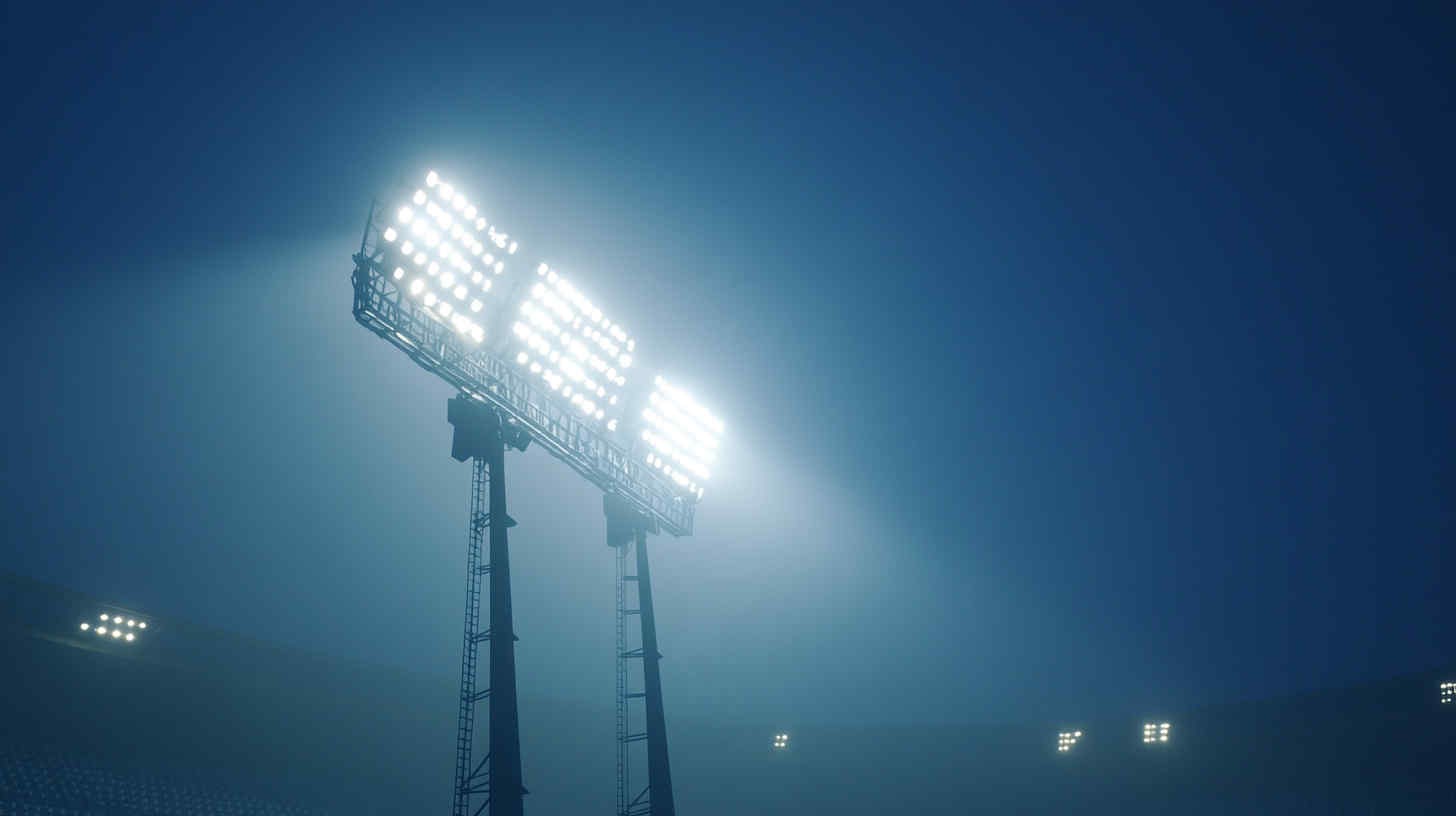
Football floodlights play a crucial role in ensuring games can be played under optimal lighting conditions, even during night matches or low-light scenarios. The height of the floodlights directly influences the effectiveness of the lighting, impacting coverage, uniformity, and glare control.
Standard Height of Football Floodlights
Typically, football floodlights are positioned at a height ranging from 20 to 30 meters (66 to 100 feet). This height is ideal for most standard football fields, providing sufficient brightness and coverage without excessive shadows or glare. These floodlights are usually placed around the field’s perimeter, often at the corners or along the sidelines, to ensure the entire playing surface is evenly lit.
For larger, professional stadiums, the floodlights are mounted on poles that stand 30 to 40 meters (100 to 130 feet) tall. This taller configuration is commonly used for high-profile games, televised events, or venues that require a higher level of illumination. The extra height allows for more even lighting across larger areas, providing bright and uniform coverage for both players and spectators.
How Tall Should Floodlights Be for Professional Games?
For professional football games or international events, higher standards of lighting are necessary. To achieve consistent and high-quality lighting across the entire field, the floodlights are typically mounted on poles that are 30 meters tall, with some stadiums going up to 40 meters.
The increased height helps ensure the lux level meets broadcast-quality standards, providing at least 1000 to 1500 lux across the pitch. These taller poles also help reduce shadows that can interfere with players’ sightlines and ensure the field is brightly lit for both in-person spectators and television viewers.
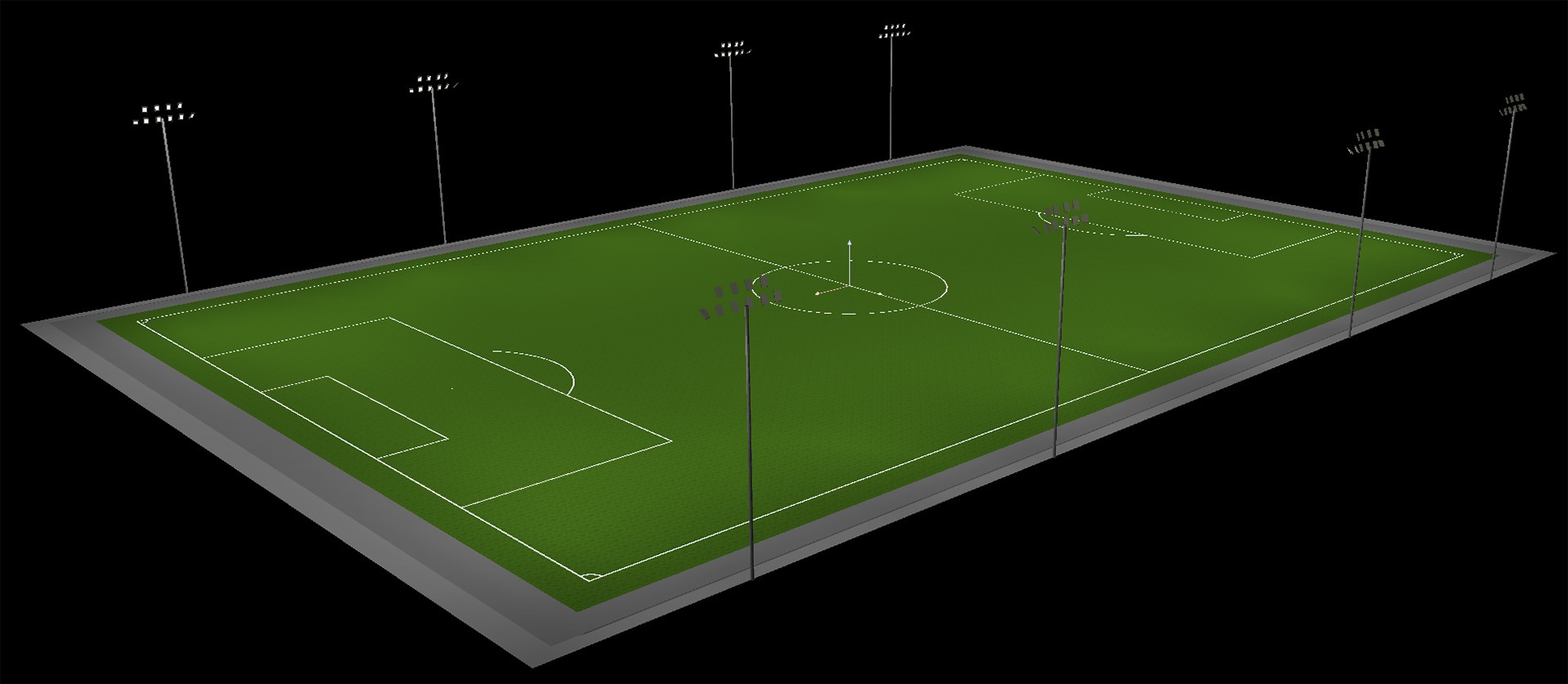
LED Stadium Lamp Layout Design
Why the Height Matters for Floodlights
- Uniformity: The height of the poles and the positioning of the lights determine how evenly the field is lit. Higher poles allow for a broader light spread, which is essential for achieving uniform lighting. Without this, certain sections of the field may be poorly lit, making it difficult for players to track the ball or see each other clearly.
- Glare Control: Mounting floodlights higher up helps reduce the risk of glare for players and spectators. When lights are positioned at the right height, they can be angled to avoid shining directly into players’ eyes, as well as those of referees or the audience, improving comfort for everyone during the game.
- Broadcast Quality: For televised events, the height of the floodlights is crucial to achieving crisp, high-quality visuals. Proper lighting is essential to ensure the ball and players are clearly visible, without overexposure or shadowy patches that could affect the viewing experience.
Considerations for Pole Height
Several factors influence the ideal height of floodlight poles, including the size of the field, the level of competition, and the type of lighting used. For example, LED floodlights are more intense and directional than traditional lighting, so they may not require as much height to cover the field. The number of poles, their light intensity, and the spacing between them all affect the height and placement of the floodlights.
In general, football floodlights are mounted at a height of 20 to 30 meters for standard fields, while professional stadiums often use poles that are 30 to 40 meters tall. This height ensures proper illumination, minimizes glare, and provides the necessary brightness for top-tier competitions. Whether for local matches or international broadcasts, the correct height of floodlights is essential to delivering the best possible experience for players, spectators, and viewers.
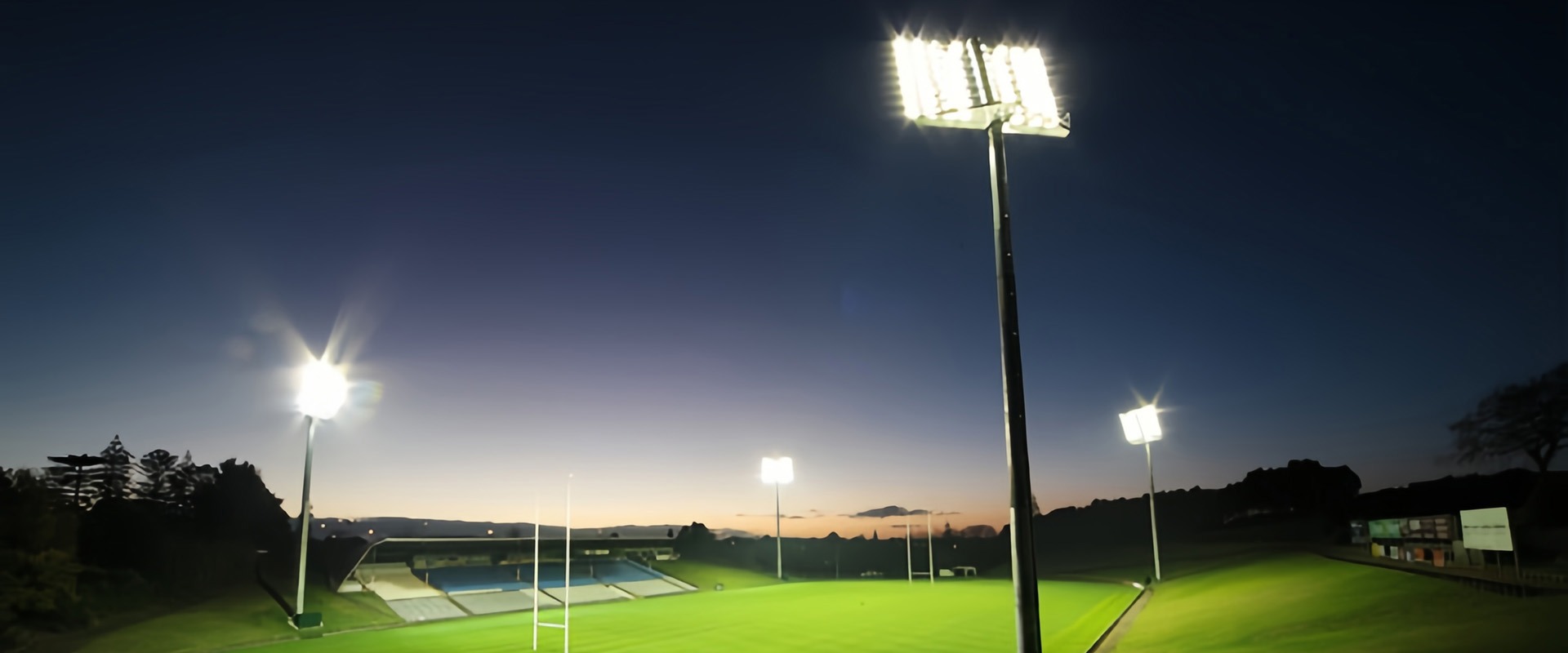
How High Should the Stadium Lights Be?
When designing stadium lighting, the height of the lights is key for both performance and visual appeal. Typically, stadium lights should be positioned between 20 to 30 meters tall. This height ensures the lights cover the entire field, minimize shadows, and provide optimal visibility for players, referees, and spectators.
For larger, professional stadiums, the light poles may be taller, reaching up to 40 meters or more. These higher poles help reduce glare and provide even lighting, especially for high-profile matches that are broadcast globally.
For the best lighting results, it’s also important to consider the spacing of the poles and the number of fixtures needed for consistent coverage. A well-planned lighting system not only improves visibility but also boosts energy efficiency by maximizing the effectiveness of each light.
How Tall Are the Lights on a Football Field?
The height of football field lights depends on the field size and specific lighting needs. Most football fields use light poles between 20 to 30 meters tall, while larger stadiums may have poles as high as 40 meters to ensure excellent lighting coverage. These poles typically have high-intensity fixtures mounted at certain angles to ensure the field is evenly lit.
For smaller or recreational fields, the poles may be shorter, around 10 to 15 meters. While these heights are suitable for less demanding conditions, they don’t provide the same clarity as higher poles for professional or televised matches.
For fields equipped with remote-controlled lights, poles are usually a bit taller, ranging from 30 to 40 meters, to accommodate advanced systems that need greater flexibility in adjusting light intensity.
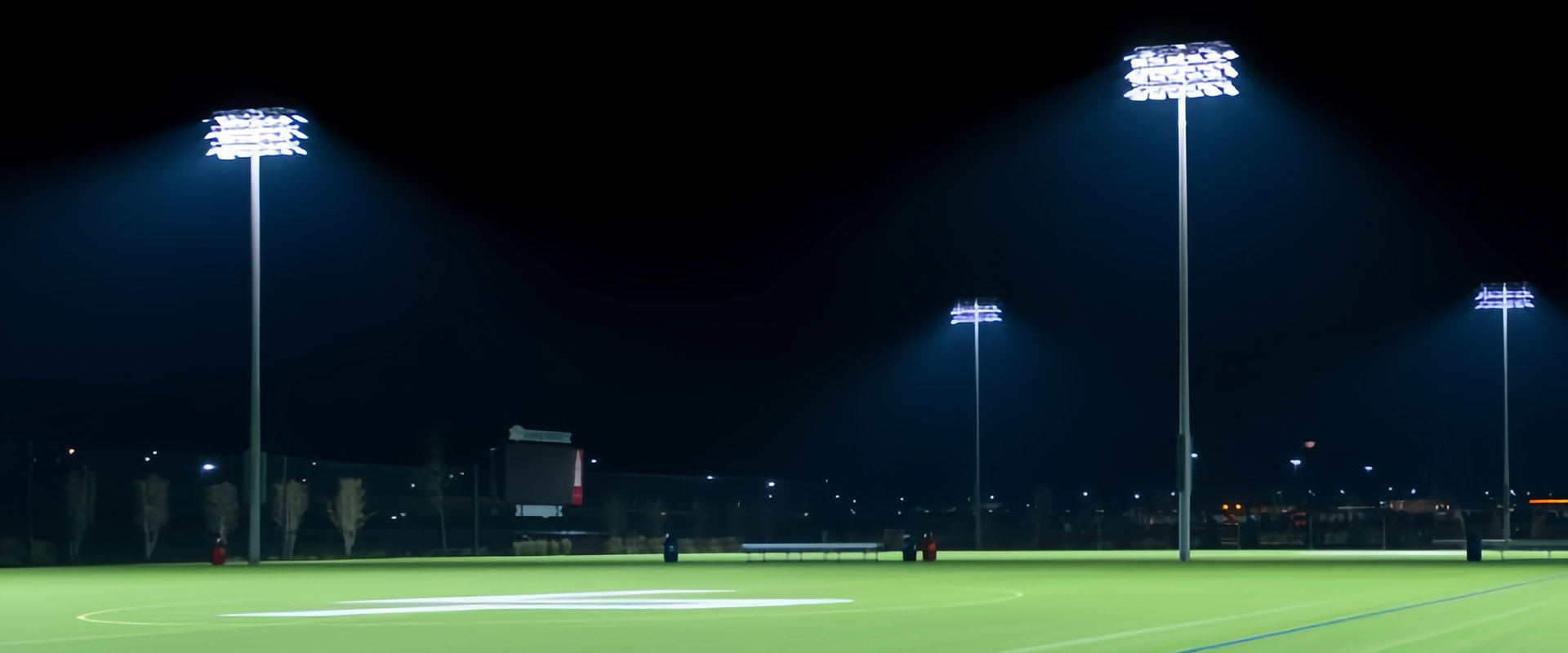
What is the Standard Height for Outdoor Lights?
The height of outdoor lights generally ranges from 10 to 40 meters, depending on the area being illuminated and the intensity required. For large sports fields and venues like football fields, poles are taller to ensure complete coverage without dark patches.
In most stadium lighting setups, poles are usually between 20 to 30 meters tall. This height strikes the right balance between delivering adequate light coverage while keeping energy costs manageable, ensuring player safety, and improving visibility.
What is the Standard Lighting for a Football Field?
The standard lighting on a football field varies based on the level of play. For recreational or amateur games, lighting around 200-300 lux is usually sufficient. However, for professional or televised matches, lighting needs to be much brighter, typically ranging from 1000 to 1500 lux or higher.
The height of the poles is crucial to achieving the desired brightness and uniformity. Taller poles, usually between 20 to 30 meters, are used in professional stadiums to ensure the lights cover the field properly, giving clear visibility for both players and spectators.
For televised events, lighting should meet a minimum uniformity ratio of 0.8 to 0.9, which can only be accomplished with the right pole height and the correct placement of fixtures.
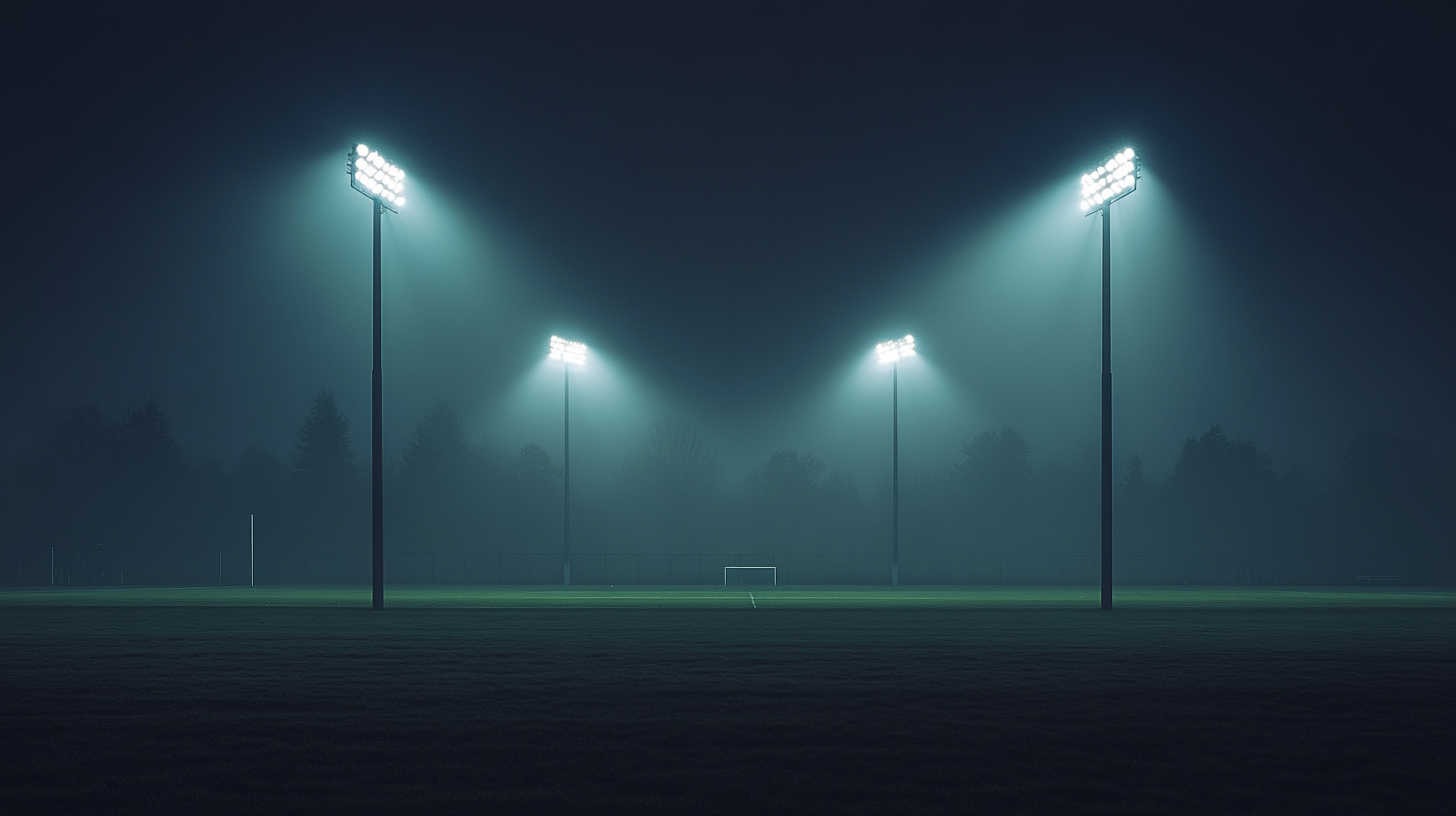
Conclusion
The height of football field lights is a key factor in achieving good visibility, safety, and overall experience for both players and spectators. Typically, lights should be 20 to 30 meters tall, with taller poles used for professional or televised events. If you’re planning a lighting system for a football field, selecting the right pole height and fixture positioning will ensure the best lighting performance. By doing so, you’ll create a brighter, safer, and more enjoyable environment for everyone involved.
If you have any questions about football field lights, feel free to reach out to us. Our lighting experts are ready to assist you.
